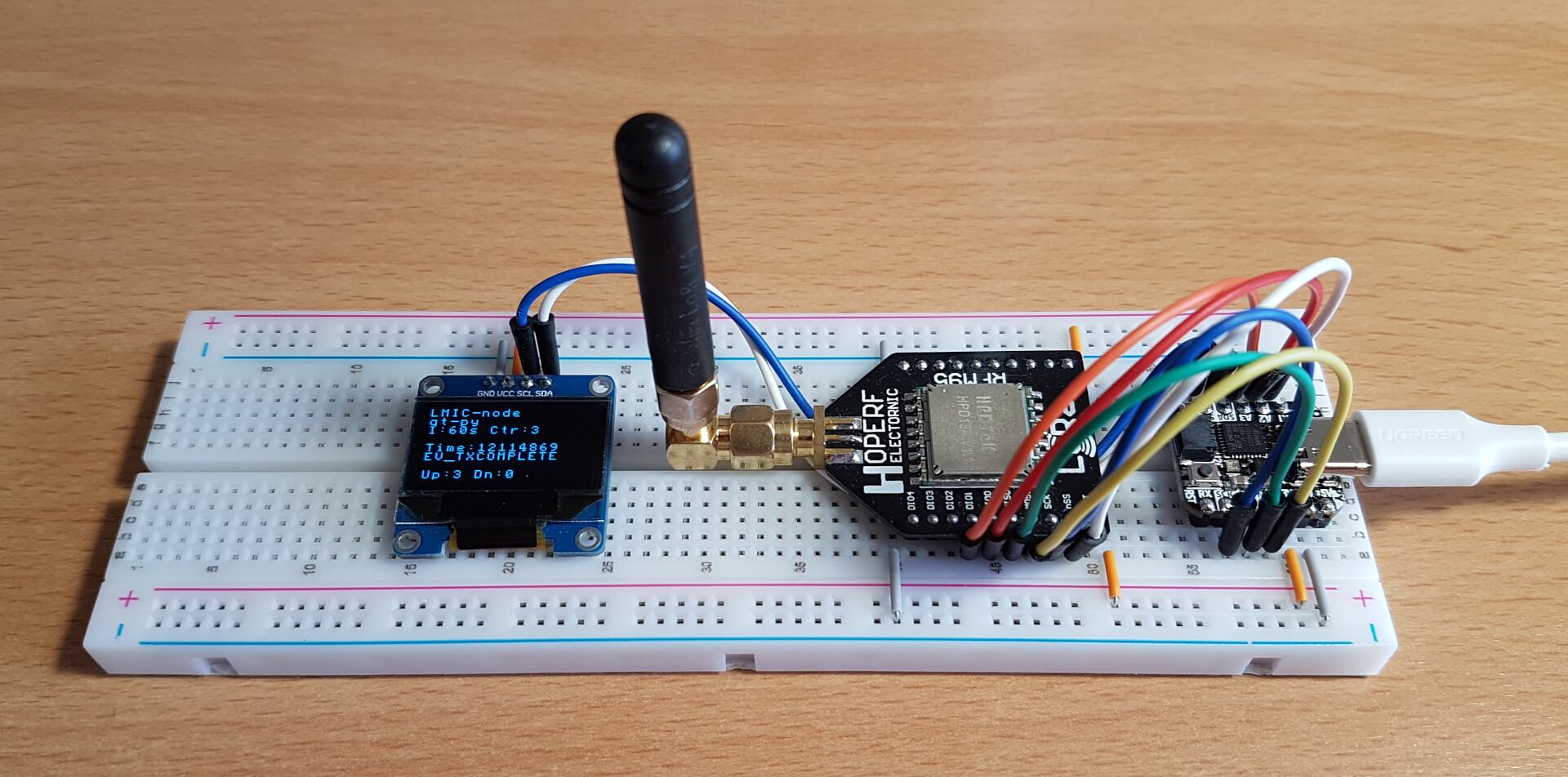Adafruit QT Py running LMIC-node

This is my Adafruit QT Py (SAMD21) board with HPD13A LoRa module and SSD1306 OLED display running LMIC-node connected to TTN V3.
Support for the Adafruit QT Py has just been added to LMIC-node.

This is my Adafruit QT Py (SAMD21) board with HPD13A LoRa module and SSD1306 OLED display running LMIC-node connected to TTN V3.
Support for the Adafruit QT Py has just been added to LMIC-node.